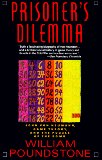Java 1.1 was released in 1997. How does code from this era compare to today’s Java code?
Following my decision to resurrect an old project, I was faced with the prospect of converting the codebase from Java 1.1 source code to something a little more civilised. The oldest parts of this software date back nearly 9 years. Even then Java 1.1 was a little old, with 1.2.2 being the latest and greatest. Though I re-wrote much of the code 4 or 5 years ago, when Java 1.4.2 was state-of-the-art, it still targeted Java 1.1 VMs for compatibility reasons (i.e. Microsoft’s VM that used to be bundled with IE).
Trawling through this code was an interesting look back to a time when Java developers could choose to use any type of collection as long as it was Vector, and pretty much the only GUI toolkit available was AWT. It was also interesting to revist the implementation decisions made back when I didn’t know nearly as much as I thought I did (though, to be honest, that’s probably still the case).
Pre-historic Collections
The first thing I noticed was the clunky use of collections and arrays in the code. Not only did this software pre-date generics, being tied to Java 1.1 meant that even the Collections Framework was off-limits. Arrays, Vectors and Hashtables were all there were.
My original code used arrays wherever a fixed length was acceptable and Vectors everywhere else. Preoccupied by the difficulty of keeping track of the type of the Vector’s contents, I had written many of the methods so that they converted their internal Vectors into arrays before returning. In modernising the code, I had similar problems remembering what types went in many of the collections that I had declared several years before. Don’t let anyone tell you that generics were not worth it. They’re invaluable for communication of intent alone.
On a similar note, the richer variety of collections that arrived with Java 2 allow for code to be written that more accurately conveys the thinking of the developer. The same method that returned an array or Vector in the legacy code could be rewritten to return List, Set, SortedSet, or just Collection. Each of these options communicates a different notion of what to expect from the method.
Sorting
The purists wept as one of the pillars of Computer Science education crumbled before them and a thousand copies of The Art of Computer Programming were consigned to the shelf indefinitely. The Collections Framework in Java 2 introduced a general purpose sort method that was good enough for the vast majority of your sorting needs. Rather than worrying about remembering how to implement QuickSort and why it was better than an Insertion Sort or a Bubble Sort, just use the modified Merge Sort that Josh Bloch and his colleagues had helpfully provided. The Comparator interface meant that this one tried-and-tested implementation was applicable to just about any problem.
The first things to go as I brought my code up-to-date were my plagiarised sort method and my custom version of the Comparator interface.
Enumerated Types
The lack of enumerated types in the early versions of Java was a curious oversight. I found my old code littered with integer constants. Effective Java remained unwritten in those days so I was ignorant of the type-safe enum pattern. I compounded my ignorance by writing methods that took three of these integer constants as arguments, each representing a conceptually different type. It was very easy to get the arguments the wrong way round and introduce all manner of bugs.
User Interface
It amazes me that people ever achieved anything worthwhile with just AWT. While I would use my mastery of the GridBagLayout to earn the respect of my peers, the lack of a rich set of GUI controls was very limiting. No tables, trees, tab sets or sliders for a start.
Swing has its critics, but I’m not one of them. There were some performance and look-and-feel issues in the early years, but I think that on the whole they got a lot more right than they got wrong. Now that I am not tied to Java 1.1, converting my project’s UI from AWT to Swing is the next item on the agenda. It will be with great pleasure that I rip out the sluggish and horrific table-simulating code that I built from a mess of GridLayouts and Labels.
[Swing was available as an external library for use with Java 1.1, but I had originally steered clear of this option because of the effect this would have had on the software’s download size]
Tools
When I began this project in 1999, Apache Ant was still a little-known part of the Tomcat project. I think JUnit was probably around then but it was not so well-known (certainly not to me). I wrote the original source code in the venerable PFE, a capable editor but it did not even have syntax-highlighting. I built the code using a Windows 98 batch file. The idea of writing automated unit tests did not even occur to me. These days IntelliJ IDEA, Ant and TestNG are essential to my development efforts.
I have no doubt that people will still be writing Java code in another decade, though how significant it will be, and how far removed from today’s code, remains to be seen. Maybe the rest of us will have all switched to JavaNG?
